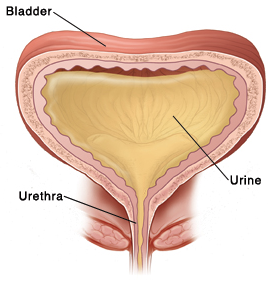Bladder Removal Surgery
A radical cystectomy is the removal of the bladder and surrounding organs. In men, the bladder, prostate gland and seminal vesicles (small glands near the prostate) are removed. In women, the bladder, urethra, uterus and ovaries are removed and the vagina is shortened. The bladder is usually removed by open surgery but the da Vinci robotic method is available for suitable patients.
If you are having a radical cystectomy, another way must be found to collect urine and remove it from the body. There are different ways this can be achieved surgically. These are called an ileal conduit or a neobladder. Information on these options are shown below.
Why do I need a cystectomy?
A cystectomy may be required for one of the following reasons:
- Cancer of the bladder
- Cancer of the uterus, vagina or bowel that involves the bladder
- Severe radiotherapy damage with ongoing bleeding from the bladder
- Interstitial cystitis/painful bladder syndrome that hasn't responded to simpler treatments
Cystectomy and formation of ileal conduit
An ileal conduit is a tube made out of a short segment of bowel. The ureters (tubes from your kidneys) are attached to one end of the conduit, while the other end is brought through to the surface of the skin. The open end is called a stoma and is similar in colour to the inside of the cheek. An external bag (urostomy bag) covers the stoma and collects the urine.
Cystectomy and formation of neobladder
This operation uses a small segment of bowel to create a new bladder (neobladder) that will collect the urine. The ureters (tubes from your kidneys) are attached to the neobladder. The neobladder is then attached to your urethra (out flow pipe). This will allow you to pass urine naturally through your urethra.

Resource Downloads
Urology Associates offer a range of downloadable materials tailored to address various urological concerns. Whether you are seeking information on prostate cancer, sexual dysfunction, female urology, pelvic health, or pediatric care, our comprehensive resources are designed to empower and educate.








